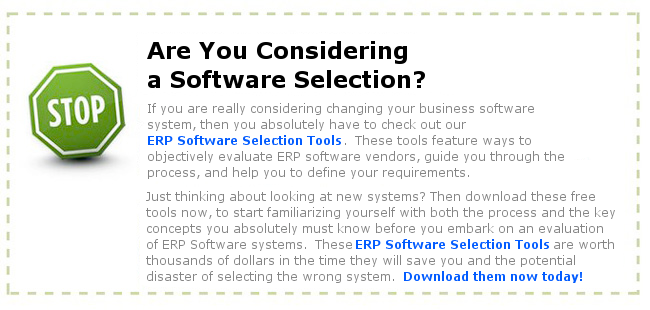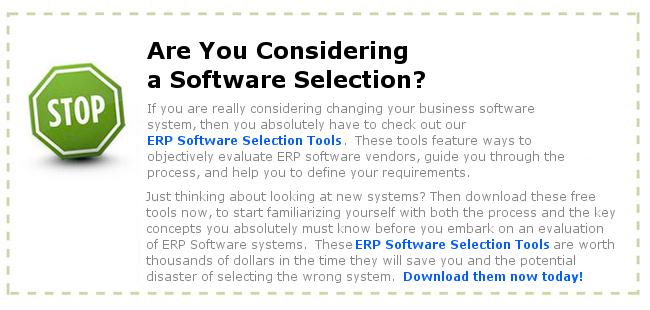In any discussion on implementing an ERP system, the question “What are the benefits of an ERP System?” appears early in most selection cycles. We have had to look up these benefits on more than one occasion, so we thought we would document them here for you.
A good reference on calculating the benefits and ROI for an ERP solution is the book: Show Me the Money: How to Determine ROI in People, Projects, and Programs
Benefits
- Real time information throughout all entire company
- Better visibility into the performance of operational areas
- Data standardization and accuracy across the enterprise. Single version of “The Truth!”
- Best-practices or proven methodologies are included in the applications
- Creates organizational efficiencies.
- Allows for analysis and reporting for long-term planning
Significant Features on an ERP System
- Information entered once into system
- Can allow for the use of the best practices
- Can be further developed
- Based on reliable file structure
- Provides functionality to interact with other elements in the process
- Provides report writers and other tools for data inquiries
ROI and Cost Savings
Here are some areas to look for possible ROI:
- Reduce Inventory through better visibility and efficiency
- Savings through the reduction in duplicated efforts
- More efficient operations allowing for increase in ability to process transactions (added capacity)
- Reduction in non-value added activities (lean processing)
- Higher utilization of employees (less transactional, more analytical)
- Improvement in decision making through more accurate and real-time data
We have more benefits listed on our ERP Benefits Page.


